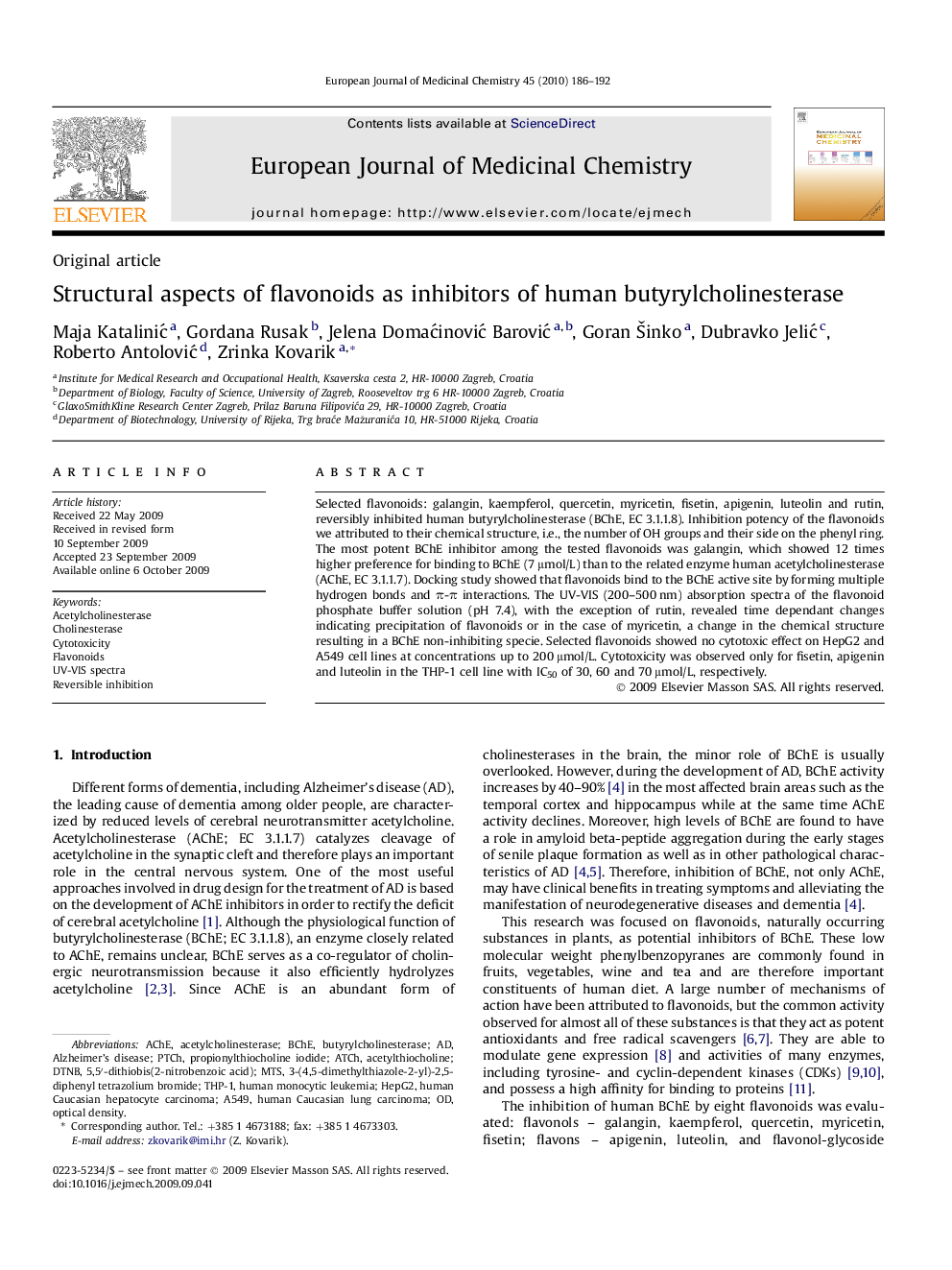| کد مقاله | کد نشریه | سال انتشار | مقاله انگلیسی | نسخه تمام متن |
|---|---|---|---|---|
| 1393192 | 1501193 | 2010 | 7 صفحه PDF | دانلود رایگان |

Selected flavonoids: galangin, kaempferol, quercetin, myricetin, fisetin, apigenin, luteolin and rutin, reversibly inhibited human butyrylcholinesterase (BChE, EC 3.1.1.8). Inhibition potency of the flavonoids we attributed to their chemical structure, i.e., the number of OH groups and their side on the phenyl ring. The most potent BChE inhibitor among the tested flavonoids was galangin, which showed 12 times higher preference for binding to BChE (7 μmol/L) than to the related enzyme human acetylcholinesterase (AChE, EC 3.1.1.7). Docking study showed that flavonoids bind to the BChE active site by forming multiple hydrogen bonds and π-π interactions. The UV-VIS (200–500 nm) absorption spectra of the flavonoid phosphate buffer solution (pH 7.4), with the exception of rutin, revealed time dependant changes indicating precipitation of flavonoids or in the case of myricetin, a change in the chemical structure resulting in a BChE non-inhibiting specie. Selected flavonoids showed no cytotoxic effect on HepG2 and A549 cell lines at concentrations up to 200 μmol/L. Cytotoxicity was observed only for fisetin, apigenin and luteolin in the THP-1 cell line with IC50 of 30, 60 and 70 μmol/L, respectively.
Flavonoids bind to the butyrylcholinesterase active site by forming multiple hydrogen bonds and π-π interactions.Figure optionsDownload as PowerPoint slide
Journal: European Journal of Medicinal Chemistry - Volume 45, Issue 1, January 2010, Pages 186–192